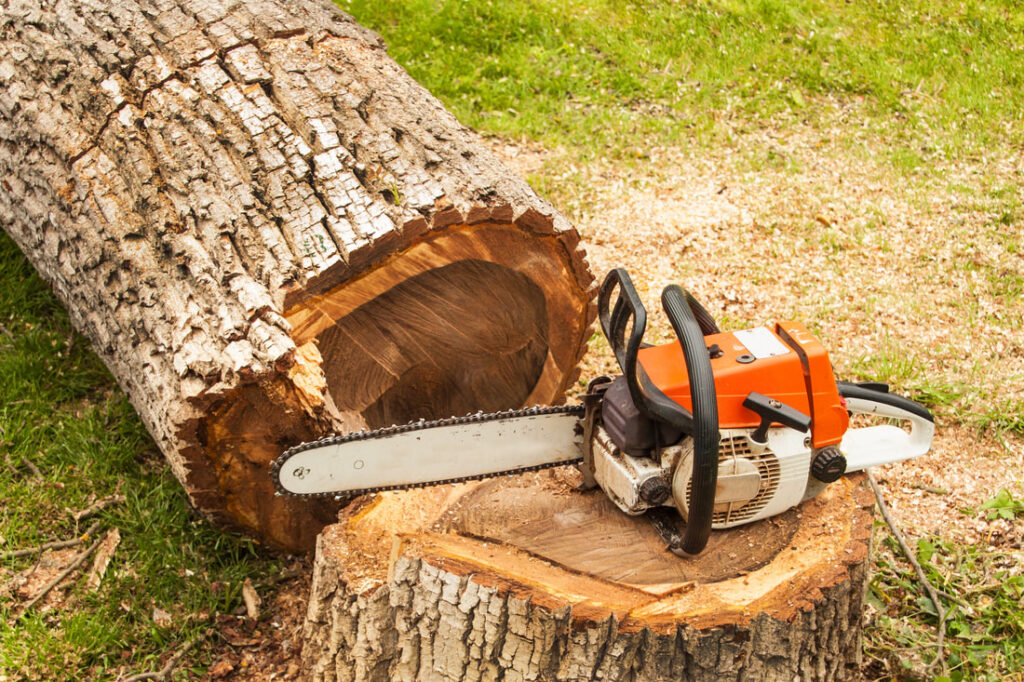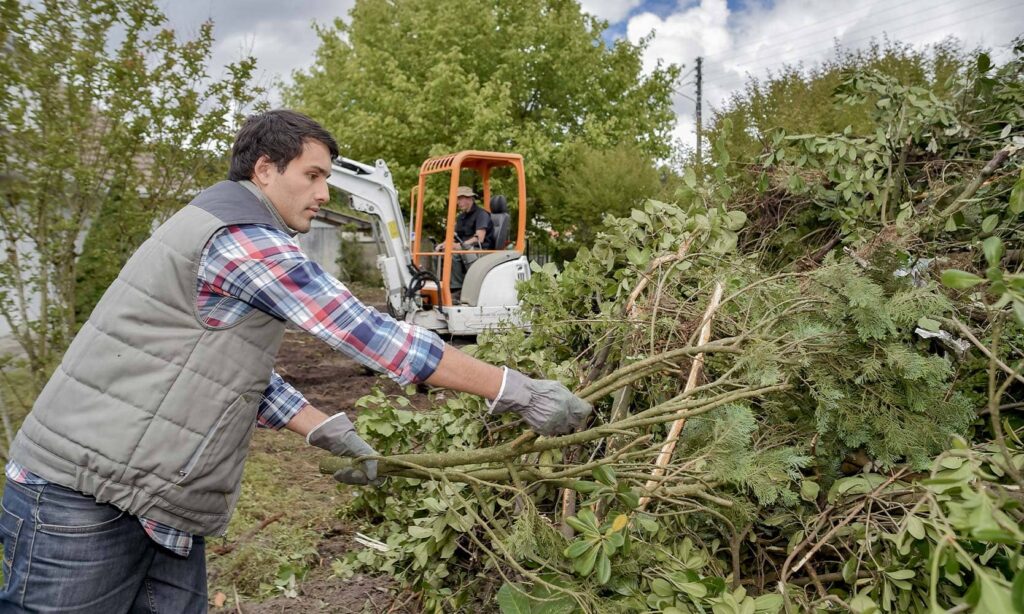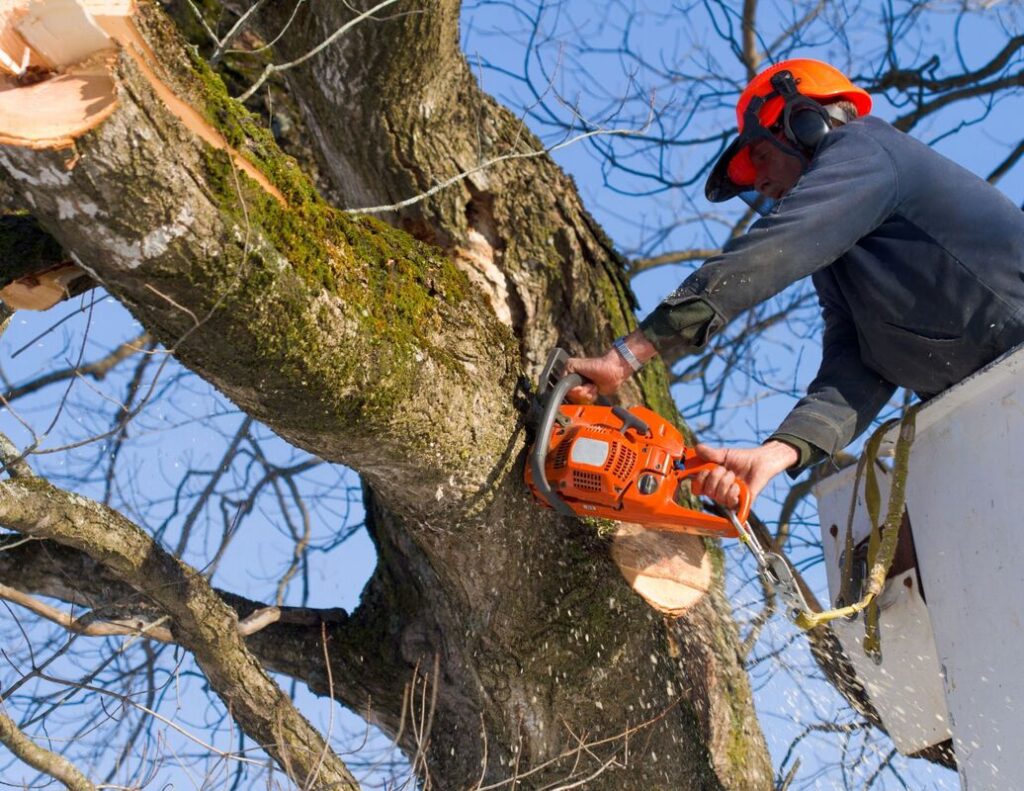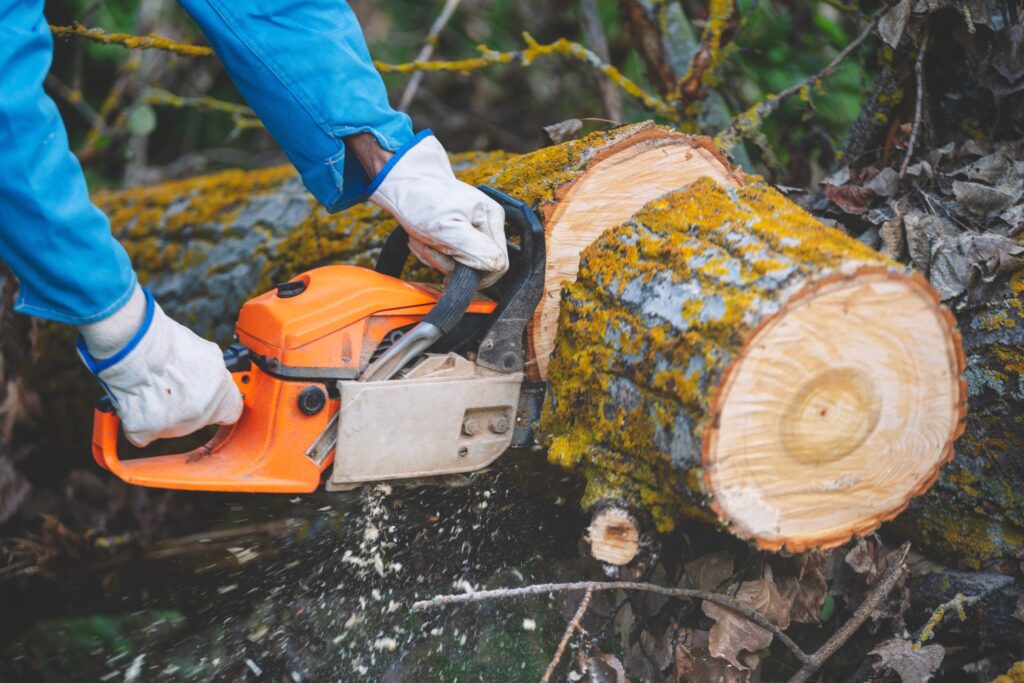Trees play a crucial role in our surroundings, providing shade, oxygen, and a natural ambiance. However, there are times when tree cutting and removal services become necessary. Whether it’s for safety reasons, diseased trees, or simply to create more space, understanding tree cutting and removal services is essential for homeowners. In this guide, we’ll explore the basics of tree cutting and removal, factors to consider when choosing a tree service, the process involved, safety measures, and answers to frequently asked questions about these services.
Understanding Tree Cutting and Removal Services
The Basics of Tree Cutting
Tree cutting involves the careful removal of branches or the entire tree itself. It is often done to maintain the tree’s health, promote growth, or prevent potential hazards. When done by professionals, tree cutting can be an effective way to shape trees, thin out branches, or prune overgrown areas.
Professional arborists assess the tree’s condition before deciding on the best approach for cutting. They consider factors such as the tree species, its age, location, and any signs of disease or decay. By taking these factors into account, arborists can determine the most suitable cutting techniques to ensure the tree’s health and longevity.

What Does Tree Removal Involve?
Tree removal, on the other hand, is a more extensive process that entails the complete extraction of a tree from its location. This is typically necessary when a tree is dead, diseased, unstable, or poses a risk to nearby structures or power lines. Tree removal requires specialized equipment and expertise to ensure a safe and efficient operation.
Before removing a tree, arborists conduct a thorough assessment of the tree’s health and structural integrity. They consider factors such as the tree’s root system, trunk stability, and the presence of any pests or diseases. This evaluation helps arborists develop a strategic plan for safely removing the tree while minimizing impact on the surrounding environment.
Factors to Consider When Choosing a Tree Service
Evaluating the Company’s Reputation
Before engaging a tree cutting and removal service, it is crucial to research and evaluate the company’s reputation. Look for testimonials, reviews, and recommendations from previous clients. A reputable company will have a track record of delivering reliable and professional services.
Furthermore, consider reaching out to your local Better Business Bureau or Chamber of Commerce to inquire about any complaints or accolades the tree service may have received. This additional step can provide you with a more comprehensive understanding of the company’s standing within the community and their commitment to customer satisfaction.
Assessing the Cost of Services
While cost should not be the sole determining factor, it is important to assess the affordability of tree cutting and removal services. Obtain multiple quotes from different companies and compare their offerings. Remember that the lowest price does not always guarantee the best quality, so it’s essential to strike a balance between cost and service value.
Moreover, inquire about any potential additional fees that may not be included in the initial quote, such as stump removal or debris cleanup. Understanding the full scope of services and associated costs will help you make a more informed decision and avoid any surprises in the billing process.
Checking for Insurance and Licensing
Ensure that the tree service you choose has the necessary insurance coverage and licensing. Tree cutting and removal can be hazardous, and accidents or damage can occur. Insurance provides protection for both the workers and your property. Additionally, a valid license indicates that the company meets the required industry standards and regulations.

It is also advisable to request a copy of the tree service’s insurance policy and verify its validity with the insurance provider. This extra precaution can offer you peace of mind knowing that you are protected in the event of any unforeseen incidents during the tree cutting or removal process.
The Process of Tree Cutting and Removal
Initial Assessment and Quotation
Prior to any tree cutting or removal, a professional arborist will conduct a thorough assessment of the tree and its surroundings. This assessment helps identify potential risks, the level of difficulty involved, and any necessary precautions. The arborist will consider factors such as the tree’s health, size, proximity to structures, and environmental impact. By analyzing these elements, the arborist can create a comprehensive plan for the safe and efficient removal of the tree.
Based on the assessment, the arborist will provide a detailed quotation outlining the scope of work, estimated timeline, and associated costs. This quotation serves as a roadmap for the entire tree cutting and removal process, ensuring transparency and clear communication between the arborist and the client.
The Cutting and Removal Process
Once the assessment and quotation are approved, the actual cutting and removal process can begin. Professionals use specialized equipment, such as chainsaws, ropes, and rigging systems, to ensure a safe and controlled operation. The arborists will strategically plan the cutting of the tree into manageable sections to prevent damage to surrounding property and ensure the safety of the crew and bystanders. By employing industry best practices and adhering to safety standards, the cutting and removal process is carried out with precision and efficiency.
Additionally, during the removal process, arborists may utilize cranes or bucket trucks for trees that are particularly large or challenging to access. These specialized tools enable arborists to safely navigate complex removal scenarios and mitigate potential risks associated with tree cutting in confined spaces or near power lines.
Post-Removal Clean-up
After the tree is successfully cut and removed, the job doesn’t end there. A reputable tree service will perform a thorough clean-up, removing any remaining debris and ensuring the area is tidy. The clean-up process involves hauling away branches and logs, chipping small branches to recycle as mulch, and raking the area to restore its original condition. By leaving the site immaculate, the tree service demonstrates its commitment to customer satisfaction and environmental responsibility.

Safety Measures in Tree Cutting and Removal
Safety Equipment Used by Professionals
Professional tree cutters and removers prioritize safety and utilize specialized equipment to mitigate risks. This may include hard hats, safety goggles, gloves, chainsaw chaps, and harnesses. The use of this safety gear significantly reduces the chances of accidents and ensures the well-being of both the workers and clients.
Hard hats are essential in protecting workers from head injuries caused by falling debris or branches. Safety goggles shield the eyes from wood chips, dust, and other particles that can cause harm. Gloves provide a better grip on tools and protect hands from cuts and scratches. Chainsaw chaps are designed to protect the legs from accidental contact with the chainsaw blade, reducing the risk of severe injuries. Harnesses are used when working at heights to prevent falls and ensure stability.
Risks of DIY Tree Cutting and Removal
While it may be tempting to tackle tree cutting and removal on your own, it is highly discouraged. DIY tree cutting can be extremely dangerous, especially for those without the necessary experience and equipment. Falling branches, incorrect cuts, and unstable tree structures pose significant risks. It is always best to leave this task to trained professionals who have expert knowledge and the right tools to handle the job safely.
One common risk of DIY tree cutting is improper tree felling, which can result in the tree falling in an unintended direction, causing damage to property or injuring individuals. Additionally, without proper training, individuals may underestimate the tension in branches or the weight distribution of a tree, leading to unpredictable movements and accidents. DIY enthusiasts often lack the specialized equipment that professionals use, such as pole saws, rigging ropes, and stump grinders, which are essential for safe and efficient tree removal.
Frequently Asked Questions About Tree Cutting and Removal Services
Tree cutting and removal can be a complex process that requires careful consideration and planning. If you’re considering hiring a tree service company, you may have some questions about the best time to cut or remove a tree, how long the process takes, and what happens to the tree after removal. In this expanded guide, we’ll provide you with additional information to help you make informed decisions and ensure the best outcome for your property and the trees themselves.
When is the Best Time to Cut or Remove a Tree?
The ideal time for tree cutting or removal depends on various factors, such as the tree species, local climate, and specific objectives. While tree cutting can generally be done at any time of the year, there are certain exceptions for sensitive species. For example, deciduous trees are typically best pruned during their dormant season, which is usually in late winter or early spring. On the other hand, evergreen trees can be pruned year-round. However, it is always advisable to consult with an arborist who can provide personalized recommendations based on your specific circumstances.
How Long Does the Process Take?
The duration of the tree cutting and removal process can vary depending on factors such as tree size, complexity, and the specific services required. A simple tree cutting job, such as trimming branches, may take a few hours to complete. However, more extensive removals, such as uprooting a large tree, could span multiple days. The arborist will provide a more accurate timeline during the initial assessment and quotation phase, taking into account the specific details of your project.
What Happens to the Tree After Removal?
After a tree is removed, the fate of the wood can be determined by the homeowner. Some tree service companies offer options for firewood processing, where the wood is cut into manageable pieces for fireplaces or wood-burning stoves. This not only provides a sustainable source of heat but also reduces waste. Additionally, the wood can be chipped and used for landscaping purposes, such as mulching or creating pathways. Recycling the wood is another environmentally friendly option, as it can be repurposed for various projects. Lastly, if none of these options are feasible, the wood can be responsibly disposed of to minimize waste and environmental impact.
By understanding tree cutting and removal services, homeowners can make informed decisions regarding the care and maintenance of their trees. Remember to prioritize safety, hire reputable professionals, and consider environmental factors when planning tree cutting or removal. With the essential information provided in this guide, you can confidently navigate the process of tree cutting and removal and ensure the best outcome for both your property and the trees themselves.
At XYZ Tree Services, we are committed to providing exceptional tree cutting and removal services. Our team of experienced arborists is dedicated to the health and well-being of your trees, as well as the safety of your property. Whether you need routine tree maintenance or require the removal of a hazardous tree, we have the expertise and equipment to get the job done efficiently and safely. Contact us today for a consultation and let us help you with all your tree care needs.
Related: How to Select the Best Tree Removal Company for Your Sydney Property
